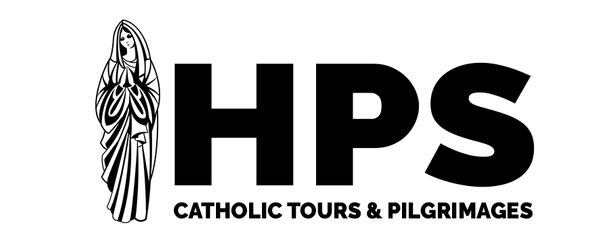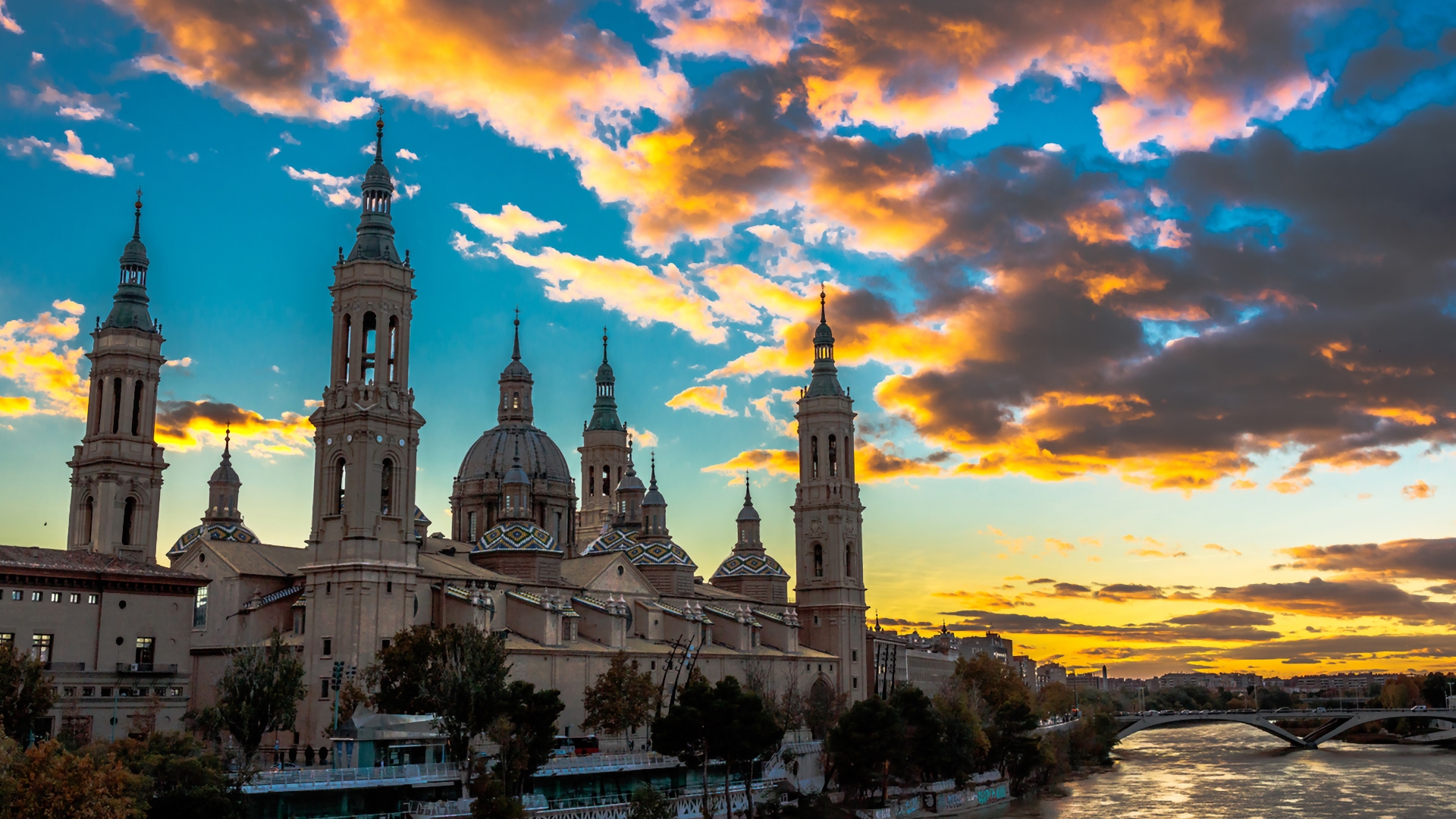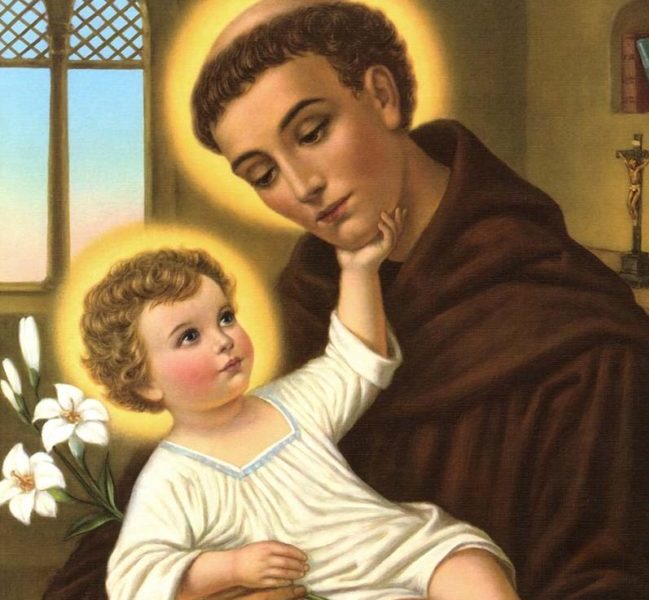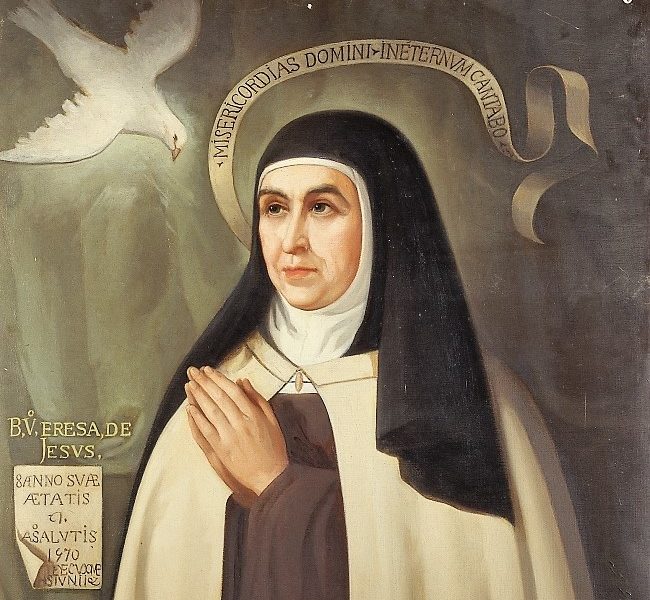The Iberian Peninsula
Spiritual Journey through Spain & Portugal
Starts: Barcelona | Ends: Madrid
The route
Barcelona & Montserrat & Manresa, Zaragoza & Virgin of El Pilar, Navarra & Xavier, The Basque Country & San Sebastian, Sister Lucia & Virgin of Fatima, Monastery of Guadalupe, St Teresa of Jesus & Avila, Madrid
Other Marian Sanctuaries in Spain of great historical and spiritual importance that go back to the Middle Ages is Covadonga (Asturias).
-
Destination
Day 1: Barcelona - Arrival day (B, D)
Arrive at Barcelona airport. Meet with your guide at the airport and transfer to your hotel in Barcelona city centre. Afternoon sightseeing tour of the city, visiting the main highlights as the buildings of Gaudi, the Olympic Harbour, the Ramblas and the Paseo de Gracia, an excellent orientation tour of the city. You will end this tour with a welcome dinner at a local restaurant Overnight stay
.
Day 2: Excursion to Montserrat & Manresa (B)
This morning we make our way to Montserrat, home to the dramatically set Benedictine monastery. This Marian shrine has attracted pilgrims for over 700 years, much as it did Ignatius in March of 1522.
We pause here to visit the Black Madonna of Montserrat, before whom Ignatius put his sword and exchanged his fancy clothes for those of a beggar.
Then we board our motorcoach and make our way to Manresa, a place of profound conversion for Ignatius.
Here, in a cave on the banks of the Cardoner River, Ignatius received a vision that provided him with deep insights into the spiritual life and altered the course of his own life. From the initial insights he received here, Ignatius went on to pen the “Spiritual Exercises".
Ignatius remained in Manresa for about a year and a half.
We enjoy an audiovisual presentation and tour of the museum at Manresa, then celebrate Eucharist in the nearby cave. We return to Barcelona for the evening.
Day 3: Barcelona to Zaragoza (B, D)
Morning at leisure in Barcelona. Lunch is on your own. Early afternoon we will depart towards the city of Zaragoza. On the way, you will leave the industrial belt that surrounds this city, and right after you will drive across the countryside, where you will see the Vineyard region of Penedés, the famous cava wine production region.
Soon, you will arrive in the Ebro river fruit plantations and after one of the few desertic areas in the north of Spain before arriving in Zaragoza at the end of the day.
Once checked in to the hotel selected, you will have time to stroll about this lovely city.
Here, the Virgin Mary (although still alive in Palestine) appeared for the first time to the apostle James (Santiago) who was relentless in his efforts to convert Spain and its people to Christianity.
By direct desire of the Virgin, a basilica was built that has come to be one of the most important cult sites of Catholicism. According to tradition, the Virgin brought a marble pillar and instructed James to construct a temple in her honour around it.
Thus was constructed the first Christian temple of worship. The Virgin of the Pillar (Virgin del Pilar) has had a profound influence on the subsequent religious life of Spain, not the least of which has been the derivation of one of the country’s most popular women’s names, Pilar. Dinner and overnight stay.
Day 4: From Zaragoza to Xavier & San Sebastian (B, L)
Today, you will drive for almost an hour towards the ancient kingdom of Navarra. In the province of Navarre, a few miles from its capital, Pamplona, you will come upon the castle of Javier. Although the castle has sufficient merit in itself to warrant a visit, it's being the birthplace of San Francisco Javier adds deep spiritual significance.
Although of a wealthy family, and destined to a career in arms, his meeting compatriot, San Ignacio de Loyola in Paris, changed the course of his life and that of Western religious life. Together these two expatriate Spaniards formed the Company of Jesus or as it is better known the Jesuits.
Without their profound intervention in the events of the following centuries, it is difficult to imagine how the Catholic Church would be today. They formed the intellectual branch of the Counter-reformation and supported the Popes and the pontificate unconditionally during some of the Church’s most difficult moments. Enjoy lunch at a traditional local restaurant in Xavier before you will continue towards San Sebastian, one of the nicest beach resorts in Northern Spain and one of the most beautiful cities inside the Basque Country, known for its local Basque cuisine and its traditional taverns where you can delight the famous pintxos and the local txakoli wine.
Upon arrival, check-in at the hotel and the rest of the day at leisure. Overnight stay in San Sebastian.
Day 5: From San Sebastian to Loyola and Burgos: The Way of St James (Camino de Santiago) (B, L)
This morning we travel west to the lovely village of LOYOLA in Spain, the birthplace of ST. IGNATIUS OF LOYOLA, the founder of the Society of Jesus, the Jesuits. Visit the Sanctuary where a magnificent Basilica adjoins a 13th century Tower House where ST. IGNATIUS was born. It was in Loyola that Our Lady appeared to St. Ignatius with the Christ Child and his profound conversion began. Later in his life, St. Ignatius renounced his portion of his family’s wealth and wrote the famous book of spiritual exercises. Lunch is included in the Basque Country before we will continue on to Burgos. We will stop at first to visit the magnificent Monastery of Santo Domingo de Silos, with some of the most beautiful cloisters in Spain. The monastery is renowned for its concerts of Gregorian chant. You will arrive at the end of the day at Burgos. Check-in and overnight stay.
Day 6: From Burgos to Leon: The Way of St James (Camino de Santiago) (B, D)
After breakfast, enjoy a city tour of Burgos and visit the 13th c. Cathedral, with it’s portal, the "Puerta del Sarmental", considered the best example of the gothic sculpture of its century, as well as the tomb of El Cid. Celebrate Mass, then continue on to Leon, the former capital of the region, stopping first in Carrion de Los Condes, to visit the old Monastery. Upon arrival in Leon, a city tour, including a visit to the Basilica of San Isidoro, constructed in the 11th century to house the mortal remains of this Saint, and the ancient convent of Saint Mark, which began as a pilgrim hospital. Check in to your hotel and get ready for dinner at your hotel. Overnight.
Day 7: From Leon to Santiago de Compostela: The Way of St James (Camino de Santiago) (B, D)
Breakfast. Early in the morning, we will visit the ancient city of León. The city of Leon was founded under the name Legio VII as a Roman military outpost. Among its many treasures, three monuments are especially worthy of attention. The ostentatious gothic cathedral aptly called the beautiful "leonina". Its stain-glass windows rival those of the Chartres cathedral of France. Close-by is the romanesque jewel, the Pantheon of Saint Isidoro, constructed in the eleventh century to house the mortal remains of this Saint, who died in the seventh century. The arrogant renaissance facade of the ancient convent of Saint Mark, which began as a pilgrim hospital under the auspices of the Catholic Kings, will be the last visit before we continue along the French Way to the lovely city of Astorga, the ancient capital of the Iberians, and over whose original foundation the Romans constructed their strategic city, Asturica Augusta, from which they controlled the gold mines of the northern peninsula, the richest in all the Roman Empire. Another of the main stops along the Camino. We will continue on our way, leaving Castillian territory via the Galician province of Lugo. Arrival at Santiago de Compostela. Dinner and Overnight stay.
Day 8: Santiago de Compostela The Way of St James (Camino de Santiago) (B, D)
Breakfast. First thing in the morning, a local guide will meet you in the lobby of your hotel to take you on a tour of the city. You will be taken around the most emblematic sites before visiting the most impressive and important of all, the Cathedral, a masterpiece of Romanesque art, constructed around the sepulchre of the Apostle Santiago (James). No matter what time of the year you visit the city, you will encounter a multitude of pilgrims who have come, many on foot, to pay homage to his tomb. And so it has been for over a thousand years. Of all the pilgrimages of the Middle Ages, that of Santiago is the only one that continues to be largely undertaken on foot. And, while there are some who undertake the Way to Santiago for non-religious reasons, the majority do so as an expression of their deep devotion. They walk the same paths, contemplate the same countryside, and mouth the same orations in the same places, as did the first pilgrims over ten centuries ago. Today, the imposing granite presence of the Cathedral dominates the city, physically, socially and economically. In the evening, you can sit in a café terrace or stroll about the city´s streets, animated by a large student presence as Santiago is also home to one of Spain´s oldest universities. Overnight stay.
Day 9: From Santiago to Pontevedra - Bom Jesus Braga – Coimbra - Fátima (B, D)
Footsteps of Sister Lucia
Breakfast. Before entering Portuguese territory, we will pay a visit to Pontevedra. In this city, Sister Lucia lived in a modest convent after the appearance of the Virgin Mary to her and two of her sisters in Fatima. Here, also, the Virgin Mary appeared to her, not far from the Renaissance church of Saint Mary the Major. Shortly after crossing the Portuguese border, we will make a stop in Braga, the oldest see in that country. Outside the city, the Sanctuary of Bom Jesus (Good Jesus of the Mount )is to be found. The stairs of this formidable baroque temple provide an insuperable example of Christian statuary, depicting the Stations of the Cross and the theological virtues. Afterwards, we will continue on to the city of Coimbra, a beautiful city, which has played a vital role in Portuguese history and culture, as it houses the oldest university. After an hour, we will journey on to Fatima, further to the south and close to Lisbon, the Portuguese capital. Arrival, dinner and overnight stay.
Day 10: Fatima (B, D)
After Mass and breakfast, tour Fatima, where the Blessed Mother appeared in 1917 to three shepherd children (two of these children were Beatified in May 2000). See their houses in the village of Aljustrel, the parochial church of Fatima where they were baptized, and of course, the chapel erected on the site of the Virgin Mary’s appearances, and the basilica. It is not surprising that Fatima is one of the most visited Christian pilgrimage destinations of the world. Dinner at the hotel. Join other pilgrims gathering at the Shrine for a candlelight procession.
Day 11: Fatima to Guadalupe
Come back into Spain, to the picturesque village of Guadalupe. Visit the Monastery, bristling with battlements and turrets, that stands above the village with its steeply pitched brown tile roofs. The first shrine is believed to have been built following the discovery of a miraculous Virgin by a cowherd in 1300. King Alphonse XI had a grandiose monastery built in gratitude, which has become an important pilgrimage center, situated at the heart of the kingdom of the Conquistadors. Christopher Columbus named a West Indian island after the shrine; the first American Indians converted to Christianity were brought to the church for baptism and Christians freed from slavery came in pilgrimage to leave their chains as votive offerings.
Day 12: Avila - El Escorial & Madrid
Visit charming Avila, the beautiful walled 11th-century town, noted as the birthplace of St. Teresa, great mystic and Doctor of the Church. Afternoon tour of the monastery and palace of King Philip’s impressive Escorial named San Lorenzo el Real. Evening arrival in Madrid. Overnight Stay
Day 13: Madrid
A full day free to explore the many sites of Spain’s vibrant capital. Tour the Royal Palace, the Convents of the Descalzas Reales and the Encarnación or visit the world-famous Prado and stroll through Retiro Park. Shop along the Gran Vía or the Calle de Preciados. The evening may include Flamenco, sampling tapas in Old Madrid, or enjoying a meal of Cordero Asado (roast lamb) or Cochinillo Tostado (suckling-pig) near the Plaza Mayor.









